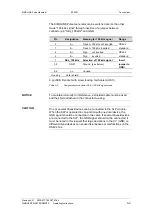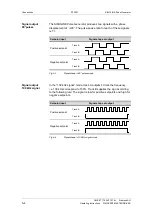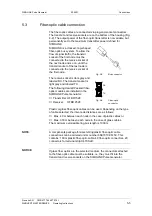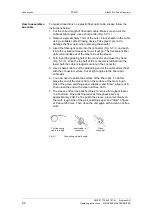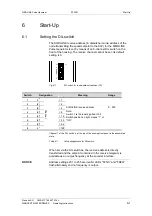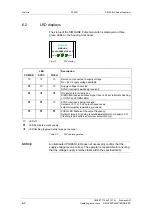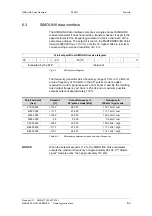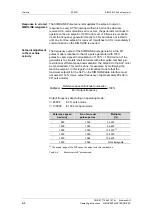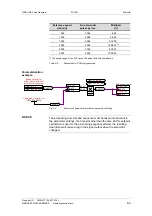
Product Description
02.2001
SIMOLINK Pulse Generator
GWE-477 764 4070.76 J
Siemens AG
2-2
Operating Instructions
SIMOVERT MASTERDRIVES
2.1
Description of function
The incoming optical signals from the fiber-optic cable are converted to
electrical signals by means of fiber optic receivers on all SIMOLINK
modules and then transferred to the fiber-optic transmitter where they
are converted back to optical signals. The propagation delays caused
by this process are calculated while SIMOLINK is booting and the dead
times compensated accordingly for active SIMOLINK nodes. The
receive information is derived, depending on parameterization, from the
buffered, electrical signals and transferred with the SYNC interrupt (last
telegram in SIMOLINK polling). The transmit information of the node is
transferred in the opposite direction and written to the associated
telegrams (electrical signals).
The SIMOLINK Pulse Generator is incorporated in the SIMOLINK ring
like a SIMOLINK slave; it is an active node and included in the dead-
time calculation. However, it does not have its own node address and
cannot therefore write transmit telegrams to the SIMOLINK (SLP does
not supply a return value).
The SIMOLINK receive address (0 ... 200; dispatcher mode: Address of
node which is sending the speed setpoint) is set via the DIL switches
on the front panel. The momentary speed setpoint is read in the
MASTERDRIVES 32-bit format (4000 0000 hex = 100 %) from channel
0. Only the 10 highest bits are resolved with a maximum output of
112 %, resulting in a speed resolution of 0.4 %. The speed setpoint
must be updated (new setpoint or identical value if velocity is constant)
in every SIMOLINK cycle by the transmitting node.
The speed setpoint is transferred to the frequency generator with the
SYNC interrupt which then generates the equivalent frequency with the
correct phase sequence of the two output signals (tracks A and B). An
output frequency of 25 kHz corresponds to a speed setpoint of 100 %.
Alternatively, a jumper can be inserted in the mating connector of X2 to
activate the "100 kHz signal" operating mode. The frequency generator
can then output signals from 0 to 100 kHz. In this mode, the frequency
signal is output via track A and the sign (direction of rotation) via track
B. The sign is a static 0 (positive) or 1 (negative) signal.
The RS422 interface forms the desired signal levels which can be
picked off on SUB D socket X2.
The operating states are indicated by the three LEDs on the housing
front panel.

















